FIRE, FUN & FIASCOES ON THE 4th (1887)
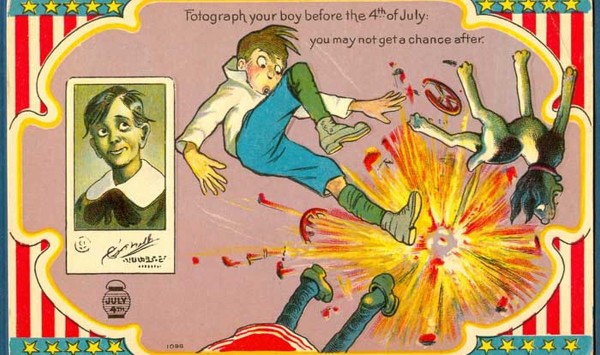
******************************************************************************************************************************** Brownstone Detectives investigates the history of our clients’ homes. The story you are about to read was composed from research conducted in the course of one of those investigations. Do you know the history of YOUR house? ******************************************************************************************************************************** A lot of accidents happen on the 4th of July. While it has been a day of celebration for Americans since its inception, certain citizens have tended to go a bit too far with their fireworks and other dangerous weapons. Back in 1887, a few days after Independence Day, a listing of the damages occurring and casualties effected on that date appeared in the Brooklyn Daily Eagle – once the authorities had had the time to assess the collective destruction. “Pistols and pyrotechnics of every kind were used with absolute impunity by even mere children,” the paper noted, “and the wonder is that more accidents did no occur.” The following list reflects a number of police blotters and lays out the accidents occurring primarily in the Eastern District (Williamsburg and Bushwick areas, and parts of Bed-Stuy). It is partial, but it will 1) boggle your mind, and 2) make you laugh. FIRE CRACKERS AS ASSAULT WEAPONS 8:30 – A boy whose identity could not be discovered threw a firecracker at the peanut stand outside the frame building at 21 Grand street and set it on fire. The building, which was owned and occupied by Sauer Brothers as a saloon, was damaged to the amount of $500 before the flames were extinguished. […]
RUTH & SAM & THE BUSHWICK FIRES (1977)
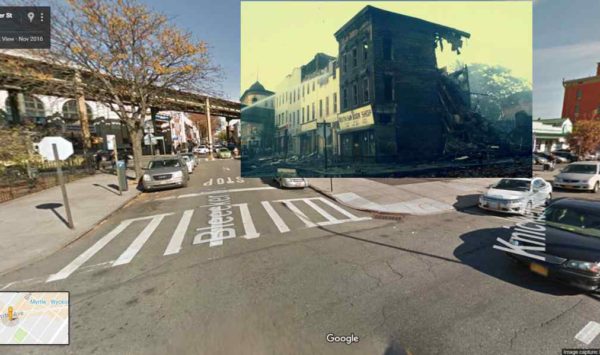
******************************************************************************************************************************** Brownstone Detectives investigates the history of our clients’ homes. The story you are about to read was composed from research conducted in the course of one of those investigations. Do you know the history of YOUR house? ******************************************************************************************************************************** In 1977, a great conflagration burned out the very heart of Bushwick. It was, at the time, one of the largest-scale fires that the Fire Department had ever fought. A 10-alarm fire, it would become “one of the largest structural fires in the city’s history,” according to the New York Times. It started suspiciously at the corner of Knickerbocker Avenue and Bleecker Street in the old Schwaben Hall, an historic German meeting hall most lately used as a knitting factory. According to the Times, the fire would rage down seven blocks of houses, destroying 23 buildings, and forcing the evacuation of more than 250 people. The destructive fire came directly on the heels of the infamous Blackout of 1977, and although the fire would smolder for days after being put out, it took about three to five hours, initially, for 55 units of firefighters from Manhattan, Queens, and Brooklyn, to get it under control. And even with this number of firefighters on the scene, it was apparent that they were working without the tools they needed to fight a fire of this intensity. Since the fire hydrants had been used by city residents throughout the summer to keep cool, they were low on water. Also, firefighters were working with an historic […]
A BROOKLYN FIREBUG’S REIGN OF FURY (1899)
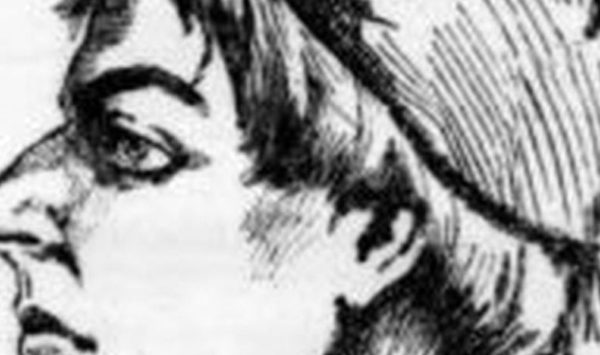
In February and March of 1899, someone was setting fires in crowded tenement houses in the eastern section of Stuyvesant Heights and Williamsburg. They started around the time that the Fire Department had classed the neighborhood of Broadway and Gates Avenue as “highly flammable.” In little more than a month, 14 suspicious fires were reported and, subsequently, doused by the department. The Brooklyn public was both fascinated and horrified by the story. Brooklynites began to watch their houses more closely and found themselves more discriminating regarding people on their street whom they did not know. Firebugs were not an unknown quantity, but this one was putting a good number of fires under his belt and fear into the heart of Brooklyn. DETECTIVE BECKER ON THE CASE! When Brooklyn Police tried to wrap their heads around the spate of arsons, wondering who could possibly be starting them and why, Detective Becker recalled a strange incident where a young Abraham & Straus delivery boy had, one day, bound and gagged himself and pretended to have been knocked unconscious by 12 thieves and had his weekly wages stolen. The boy had eventually admitted his act, but would not say why he had done it. As Brooklyn Police had nothing else really to go on, Capt. Ennis of the Ralph Avenue station detailed Becker to watch the youngster, Irving Taylor, Jr., to determine if he were somehow involved. Detective Becker knew that the 15-year-old was a smoker. He consumed eight to ten packs daily. […]
TILTING AT FLATBUSH WINDMILLS (1879)
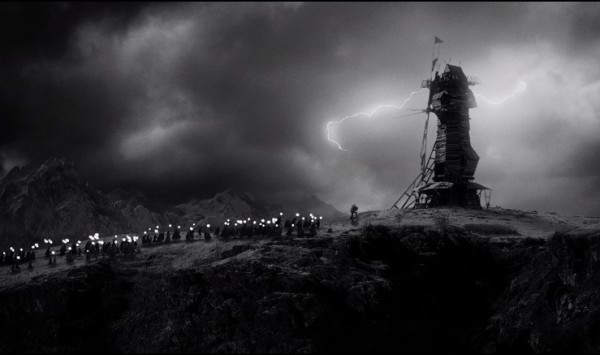
******************************************************************************************************************************** Brownstone Detectives investigates the history of our clients’ homes. The story you are about to read was composed from research conducted in the course of one of those investigations. Do you know the history of YOUR house? ******************************************************************************************************************************** It was iconic like the Williamsburg Bank building (1 Hanson Place) at Flatbush Avenue. It had stood on the same Flatbush farm for 75 years – a relic of our Dutch past and a connection to our Brooklyn roots. Most Brooklyn residents had never seen it – but everyone knew of it. It had even made such an impression on the psyche of 19th century Brooklynites that socialite Gertrude Lefferts Vanderbilt included its destruction in her book, The Social History of Flatbush. And, incredibly, it had even had a special significance to the “colored” people of New York and Brooklyn, as it was used during the Civil War draft riots of 1863 – which had spread from New York to Brooklyn – to shelter much of the city’s black population. By the late 19th century, though, it was no longer operable as a windmill. As landmarks went, however, no one could relegate the structure to any sort of second class status. It was a Brooklyn landmark through and through. But all of that changed on a single night in 1879 when, through the bottom windows, the Vanderveer windmill began to spout flames. CONFLAGRATION! The flames rose so high, filling the eastern expanse of the night’s horizon, that people in the center […]
THE HERO OF THE HALSEY STREET FIRE (1911)
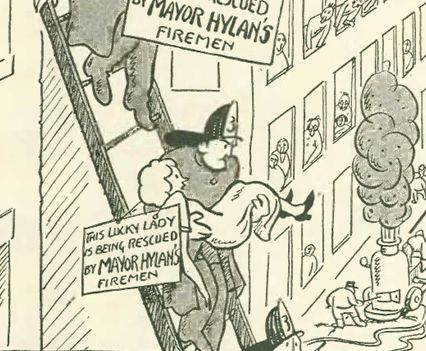
******************************************************************************************************************************** Brownstone Detectives investigates the history of our clients’ homes. The story you are about to read was composed from research conducted in the course of one of those investigations. Do you know the history of YOUR house? ******************************************************************************************************************************** Late in 1911, on a brisk early November morning, a fire broke out in the ground floor store of a 4-story corner apartment building across the street from Saratoga Square Park. It quickly spread, engulfing the entire building. Smoke pouring out of the store on the ground floor of 801 Halsey Street was first seen by a streetcar motorman, William Coffey, who, thinking quickly, began to clang his streetcar gong to arouse the sleeping inhabitants of the building. Coffey and his conductor, along with their six passengers, descended from the car and rushed to the building to do what they could do to assist in evacuating the residents. The fire had apparently started on the ground floor on the Halsey side of the building in a stationery store run by Wolf Bialik. Next door was a grocery store operated by Ernest Seemeyer. The flames then quickly “shot up the dumb waiter shaft to the roof, mushrooming out on each floor.” DETECTIVE O’HARA TO THE RESCUE Across the street, at No. 98 Howard Avenue, a 37-year-old police detective, Irving A. O’Hara, upon hearing the street car gong, had begun dressing quickly and rushed across the street to assist. By this point, the three families living in the building had made it out […]
ROASTING CORK IN A “HEIGHTS” FIRE (1907)
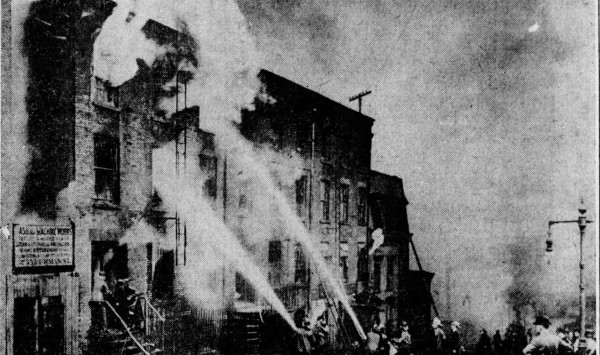
The Jehovah’s Witness complex in Downtown Brooklyn was once the scene of a roaring early morning 4-alarm fire that threatened to destroy the vast warehouse district that existed there in 1907. Sitting along the waterfront at the location of the fire – on both Columbia Heights and Furman Street – was a cork company, a coffee roasting factory, and an ice plant. SAVING THE WAREHOUSES It is not known where exactly within the complex the fire broke out, but it was determined by many of the residents of the district that the aroma of burnt coffee and cork did not make for a attractive combination that morning. The “oily reek of cork” was in the smell of the smoke throughout the morning, while roasted coffee – roasted twice over – brought residents to realize which warehouses were caught within the conflagration. The buildings in the picture above sat on what is now the Jehovah’s Witness compound and comprised a number of private homes that were still existent within the old warehouse district. Among them was “a frame house of the old style sort, two stories in height, with a mansard roof for an attic.” And in that building Catherine O’Neill, 50, and her bedridden sister, Agnes O’Neill, 65, both former “schoolma’rms,” feared for their lives. SAVING THE SCHOOLMARMS Patrolman Keating, who sounded the alarm, grew concerned as their building was shrouded in black smoke. No one had seen the two women that morning, and he “feared that something had happened to them.” So, […]
The Burning of Mayor Wood’s Home (1855)
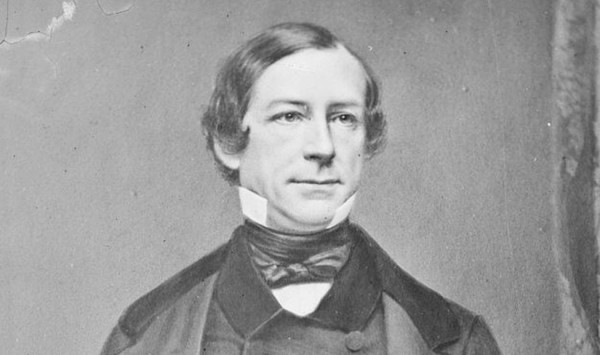
One of the buildings involved in yesterday’s horrific conflagration in the East Village had at one time been the residence of a New York City mayor infamous for his suggestion during the Civil War that New York City secede from the Union. According to an 1855 New York Times news-story, that mayor, Fernando Wood, lived at No. 121 Second Avenue (today, No. 123). Apparently, this 4-story and basement single family residence would be his home for many years. The fiercely political 2-term mayor was known for his leadership of Tammany Hall and for a system of massive patronage in city government that would eventually lead to emergence of Boss Tweed. Wood’s initial image, though, was one of anti-corruption, as, while living at his Second Avenue home, he was hailed for rooting out the extensive corruption that was rife within the New York Municipal Police Department at the time. According to the East Village/Lower East Side Historic District Designation Report, 123 Second Avenue was constructed in 1834. It subsequently underwent numerous alterations over the years, one of which likely occurred around 1911 when Second Avenue was famously widened – it was in that action that the building’s stoop and yard were removed. The numbering, also, was altered at some point. The current No. 121 Second Avenue was previously No. 119 Second Avenue, and today’s No. 123 Second Avenue (Wood’s residence) was then No. 121 Second Avenue. Follow @BrownstoneDetec ———————————————————————————————————————– The Brownstone Detectives The story you just read was composed from historical […]